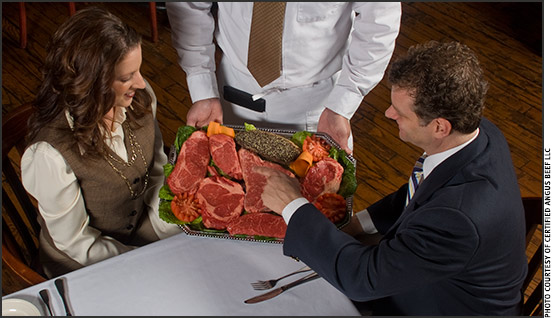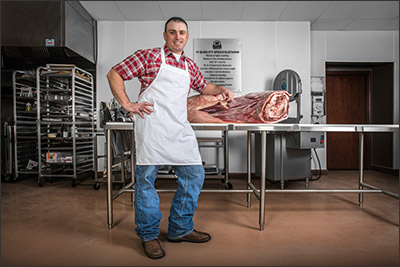
Celebrating Beef Month:
Specs Still on Target with Consumers
Forty years after defining the brand to meet consumer expectations, CAB® specifications still define positive eating experience today.
For all the talk of fads and changing consumer habits, this remains: What makes a good beef eating experience today is the same as it was 40 years ago. A new research report details — and updates — the science that still defines the ideal carcass.
“They continue to research it, and we continue to see the same results — that more marbling is better,” says meat scientist Phil “Dr. Phil” Bass.

“It’s amazing the amount of data that’s out there that just shows Angus cattle, in general, will tend to have better carcass quality,” Phil Bass says, referencing work as old as 1982 and as current as 2014.
The 25-page literature review he recently authored for his company is titled, “The scientific basis of the Certified Angus Beef® (CAB®) brand carcass specifications.” It combines findings of 127 published scientific articles to help explain the technical basis for the brand’s third-party-evaluated criteria.
Those include everything from a “10- to 16-square-inch ribeye” to “no dark cutters.”
It all starts with cattle that are at least 51% black-hided, as a way to identify “Angus-type cattle.”
“It’s amazing the amount of data that’s out there that just shows Angus cattle, in general, will tend to have better carcass quality,” Bass says, referencing work as old as 1982 and as current as 2014.
“However, merely having an Angus phenotype is only a first step in qualifying for the CAB brand; 10 carcass traits must be evaluated and confirmed within specification prior to formal certification of the carcass,” the paper notes.
Marbling is the No. 1 reason cattle don’t qualify, as that score must be Modest or higher, otherwise known as upper-two-thirds Choice, but also needs to be evenly distributed, with medium to fine texture.
Several studies from Texas and Kansas to Colorado point out the role marbling plays in increasing palatability measures: flavor, juiciness and tenderness.
“Beef with a higher amount of marbling that is known to originate from a grain-finished management system has been described as having a desirable, buttery flavor,” the paper reports, also noting how even distribution influences tenderness.
Not only does the fat melt during the cooking process and help “lubrication,” but also “the less dense marbling dilutes the amount of muscle fiber bundle and thus accounts for an easier bite mechanically.”
Fat that melts during cooking results in “consistent and uniform distribution of perceived juiciness.”
The white paper covers everything from the logic for carcass sizing measures to specifications designed to eliminate defects.
Bass says precision and accuracy in meat science have improved as tools for cooking and measuring attributes like color have, as well, but the science still proves the late 1970s specifications are just as relevant in 2016.
“We continue to see an increase in quality beef at the packing level,” he says. “That means the farmers and ranchers are doing their job, but I would encourage continued focus and trying to hit more ideal sizes, not just bigger sizes.”
Trying to eliminate stress, selecting for docility and “making sure that the animal is well-finished but not overfinished” help avoid discounts.
What’s good for the consumer will bolster profits for the producer, Bass says. That hasn’t changed, either.
To read the entire paper, visit www.CABpartners.com/educators.

Editor’s Note: Miranda Reiman is assistant director of industry information for Certified Angus Beef LLC.






